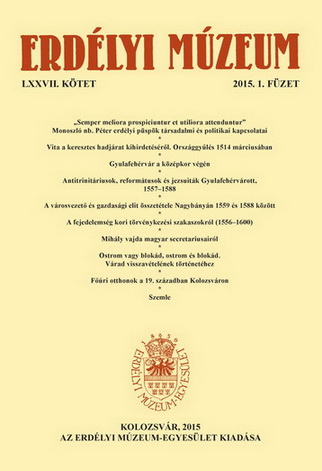Az iszlói Iszlay család útja a primori rétegbe
The Way of the Iszlay de Iszló Family into the Class of Primores
Author(s): Béla Vilmos MihalikSubject(s): Cultural history, Diplomatic history, Military history, Political history, Social history, 16th Century, 17th Century
Published by: Erdélyi Múzeum-Egyesület
Keywords: Szekler nobility; Unitarian nobility; social mobility; family strategies
Summary/Abstract: In this paper I examine the rise of the Iszlay de Iszló family into the highest nobile class, the primores regarding to the social mobility. I am looking for the answer, that what possibilities and limits came up during this process. The first sources about the family are from the sixteenth century, but the building of a familial identity bound the family history to the mythological Szekler prehistory. By the beginning of the seventeenth century the family had already divided into several different branches, but the line of Iszló emerged after in 1605 István Bocskay, Prince of Transylvania raised Peter Iszlay into the class of the lófős (primipili, horsemen, a special class of the Szekler nobility). One of his sons, György Iszlay in 1636 already mentioned among the primores of Marosszék, thanks to his marriage, getting new lands and his activity as a barrister. But that was not a permanent success for the family, because the branch of György died out soon. The other son of Péter Iszlay, Miklós married Zsuzsanna Koczkány, descendant of a wealthy family. That helped the family to gain new lands outside of Szeklerland, in the counties of Transylvania, but that was a long process. The family became the member of the highest class of nobility, the primores just at the beginning of the eighteenth century. But the family had only local significance, they played important roles mostly in the Unitarian Church of Marosszék. Their confessional bonds became the most important limit of the further social rise, because the Unitarian nobility lost her political influence at the beginning of the eighteenth century.
Journal: Erdélyi Múzeum
- Issue Year: LXXVII/2015
- Issue No: 1
- Page Range: 128-144
- Page Count: 17
- Language: Hungarian

